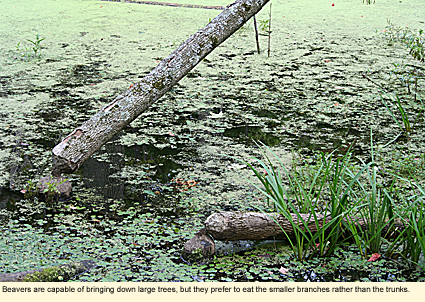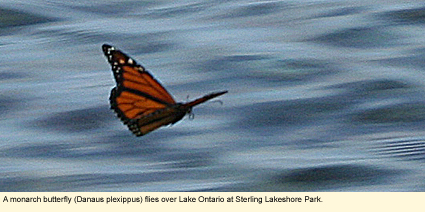Home > Recreation > Nature CentersNature Centers in the Finger LakesSterling Nature CenterJensvold Rd. Sterling, NY 13156 315-947-6143
LOCATIONSterling Nature Center is part of Sterling Lakeshore Park, a Cayuga County park on the southern shore of Lake Ontario. The interpretive center, parking lot, and trail heads are situated at the very end of Jensvold Road (a dead-end road) in the Town of Sterling in the northeastern corner of Cayuga County. (This is a very rural area. The interpretative center is the only structure on that road, and houses in the area can be few and far between depending on which direction you're coming from. My advice to you is, if you think you are lost, stop and either phone the nature center and ask directions or find the nearest house and ask. People will understand.) GENERALSterling Lakeshore Park consists of about 1,400 acres with 1.9 mi./3 km. of lakeshore along the southern side of Lake Ontario. The property was once a farm with the house--now the interpretative center--dating back at least to 1860. The land around the interpretative center sits about 60 ft./18.2 m. above lake level. Along with the interpretative center there is a 5-acre constructed pond, a beaver-constructed wetland and several natural wetlands, 9 mi./14.4 km. of trail, a creek, and hundred of acres of field and woods. INTERPRETATIVE CENTERThe first place you should visit is the interpretative center where you will find many displays and brochures that will help you understand what the park and the surrounding region offer. The center also has a small gift shop and restrooms. LAKESHOREThe lakeshore along this area is typical for the area but unique in and of itself. Typical are the stoney beach with fist-sized cobbles that were once used in constructing cobblestone houses, the high sandy bluffs, and wetlands just back from the shore.
Walk the Lake Trail (.2 mi./.3 km. ) down to the beach. Feel free to walk the beach and photograph the bluffs, but never climb on them. They are not stable. You can canoe or kayak directly from the shore. Swimming, however, is not permitted.
TRAILSVisitors are requested to stay on the trails and not to wander. On the back of the trail map is a description of each trail. If you had time for only one of the nine trails, you might consider the Heron Trail, a trail of less than 1 mi./1.6 km., which travels in a circular route by the pond, the beaver wetland, and through a woodland with American chestnuts and many native wildflowers.
The Heron Trail intersects with the Dogwood (Road) Extension Trail, an old camp road on which cross-country skiing, snowmobiling, horseback riding, and bike riding are permitted, though the large limestone rocks used to cover the t
Beware! It should be noted that your are likely to encounter a number of biting insects in the woods, especially mosquitoes. Hiking when the weather is cool or windy will decrease your chances of encountering them but will not eliminate them all together.
It should also be noted that poison ivy is native to the Finger Lakes and can be found in great quantities in the woods along Lake Ontario. If you stick to the center of the trail, you probably will be able to avoid it. You may also want to wear long pants rather than shorts. WETLANDAlong the Lake Ontario shore is the Buttonbush Wetland, a typical natural wetland for the area where the buttonbush--a shrub that loves wet feet--thrives. Unfortunately, there are no benches here, a problem throughout the park where benches are few and far between.
There is a bench, however, at the observation platform for the beaver wetland. This is a must see spot, which allows you to watch--without disturbing the wildlife too much--a great blue heronry with more than two dozen nests in large trees that died when the beavers flooded the area. A pair of ospreys is also nesting here. You can see them, the herons, a variety of ducks like mallards and wood ducks, kingfishers, and maybe even the beavers, better if you bring binoculars or a spotting scope. The bench on the observation platform is a great place to have a picnic lunch.
CREEKSterling Valley Creek runs through a portion of the park. (This creek connects with Sterling Creek, which enters Lake Ontario at nearby Fair Haven Beach State Park.) There is a parking lot and canoe/kayak launch site into Sterling Valley Creek on the east side of Farden Road. This site is marked on the nature center map. OTHER ACTIVITIESBikingThe entire region along the Lake Ontario shore is rather flat and great for biking. Many people make long-distance trips, camping at CampingCamping is not permitted in the park but is permitted in nearby Fair Haven Beach State Park, which offers a variety of camping options. Winter ActivitiesSnowshoeing and cross-country skiing are permitted on some of the trails in the park. The center has some donated equipment that visitors may borrow. Snowmobiling is permitting only on marked trails. ShopsThe nearest gas station, grocery store, and eateries are in Fair Haven, which is a very small, mostly seasonal, hamlet. Outside of Fair Haven, the Town of Sterling offers little in the way of services. Come prepared. DogsDogs are permitted in the park and must be leashed at all times. PLANTSThe park has a wide variety of habitats with many interesting native plants. The park also mows a great deal to keep certain areas open, which allow for the growth of many non-native plants despite the fact that the park is rather isolated. To see native plants, you will have to stick to the wetlands and the woods. Much of the woods is moist and has a variety of mosses and fungi.
ANIMALSBeavers are animals that deliberately change their habitat. In so doing, they often create habitat for other animals. No only can you see beavers at Sterling Nature Center, but a variety of reptiles and amphibians. You may also see raccoons, foxes, deer, opossum, mink, and a variety of insects and birds.
There is a special event that takes place twice a year along the Lake Ontario shore. It is the spring and fall migration of birds and butterflies. In the spring you will see gathered in the trees and bushes along the southern shore of Lake Ontario hundreds of thousands of birds, waiting for winds from the south to help them on the long flight across the lake to Canada. This is an ideal time to watch hawks and warblers that you might not otherwise see. Once the weather starts to cool in late summer, they again start their trek. On nights after a wind from the north, you can find thousands of birds resting after their long flight across the lake. Some birds take the long way around by land, but no matter where you look, you will see all kinds of birds.
One of the great mysteries of the animal world is the migration of the monarch butterfly. The monarch butterfly (Danaus plexippus) is native only to North America and, as a caterpillar, eats almost exclusively the leaves of the common milkweed (Asclepias syriaca). Birds learn not to eat them because they taste bad, having consumed the milky sap of the milkweed.
A large butterfly, it is slow flying. It begins its trek on the East Coast in Florida and lays its eggs on its way north. New generations hatch, grow, turn into butterflies and continue the trek north, laying eggs along the way. Finally, in mid-summer, the monarchs arrive at the southern shore of Lake Ontario where they gather to wait for a warm wind to take them across the lake. You can sometimes see hundreds or thousands of butterflies waiting along the shore. Once they get to Canada, they lay eggs. This new generation doesn't have time to continue the trek north. Somehow it knows to turn around and fly south all the way to Florida. These butterflies gather on the northern shore of the lake and wait for a wind to help them across. In the 1970s, they were so thick along the shore that you couldn't move. They would land and hang all over you. Since then, their population, and the populations of most insects in North America, has decreased drastically, but you can still see the miracle of monarch migration today at Sterling Nature Center and all along Lake Ontario.
The monarch butterfly is highly revered in the Finger Lakes and throughout North America. We would ask you to be careful not to harm them, so that they can continue their great trek across the continent.
NEARBY PLACES OF INTERESTLittle Red School House Museum
Updated 30 November 2013
|
|
|


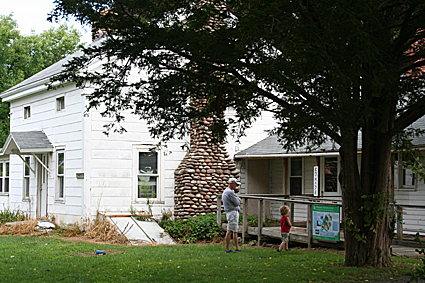
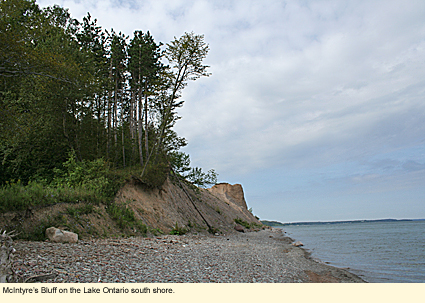
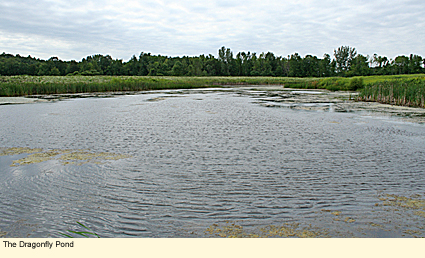
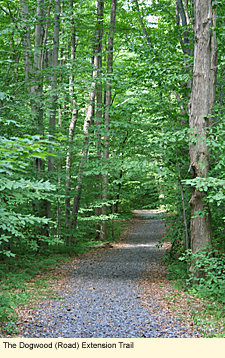 rail are probably not all that good for bike tires.
rail are probably not all that good for bike tires.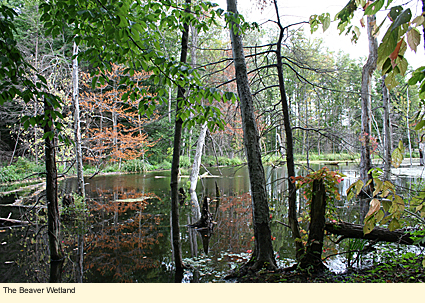
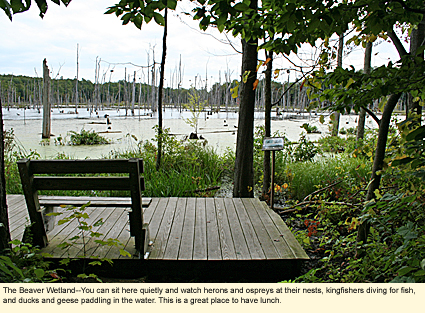
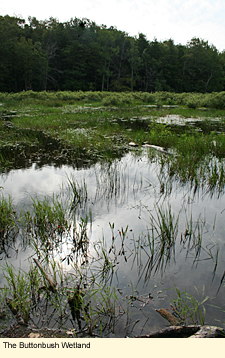 the various state parks along the way. In Sterling, the town roads are generally paved but have no shoulders. State roads have wide shoulders. Helmets are recommended.
the various state parks along the way. In Sterling, the town roads are generally paved but have no shoulders. State roads have wide shoulders. Helmets are recommended.